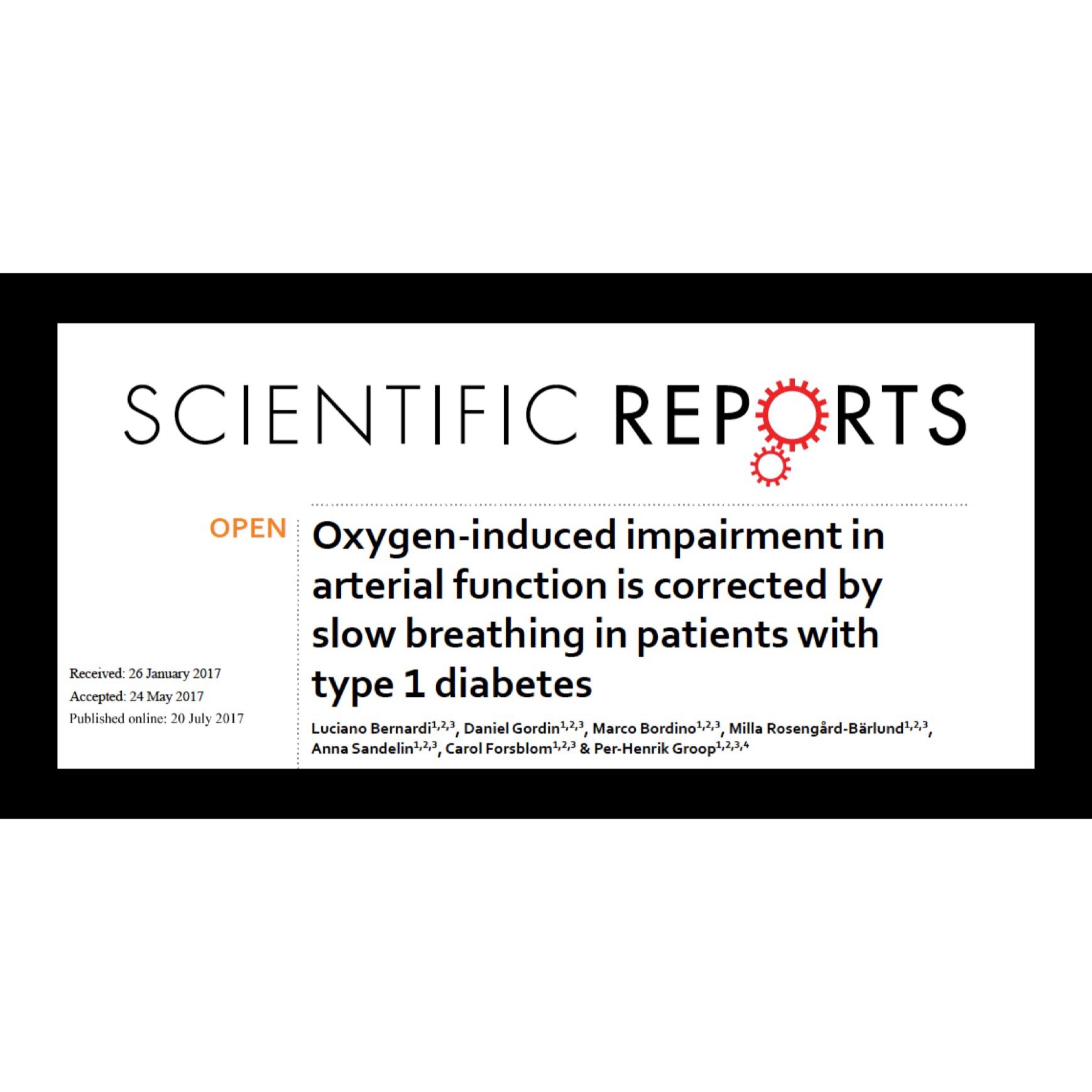Key Points
Intermittent hypoxia (IH) increases brain blood flow, even with low CO2
IH increases fractional oxygen extraction in the brain
IH might be a useful before a workout, competition, or presentation to increase brain blood flow and focus
The Breathing Diabetic Summary
Your brain consumes almost 20% of your oxygen at rest. Therefore, during intermittent hypoxia (IH), it makes sense that the body would compensate to make sure the brain gets the oxygen it needs.
However, previous studies are conflicting because when oxygen is reduced, we typically start breathing more. This gets rid of too much carbon dioxide (CO2), leading to hypocapnia (low CO2).
CO2 is a main driver of cerebral vasodilation. That is, it increases brain blood flow. Thus, if CO2 is reduced, we would expect less blood flow to the brain.
This study aimed to see how these factors played out during cyclic IH. Would the reduced O2 increase brain blood flow, or would it be offset by reduced CO2?
They recruited 8 healthy men that were ~25 years old. The participants inhaled O2 at 10% for 6 min to induce hypoxia. They then breathed normal room air for 4 min. This cycle was repeated 5 times. Measurements were taken after the 1st and 5th bouts to see how responses changed during progressive hypoxia exposures.
During the bouts of hypoxia, blood oxygen saturation dropped to ~67%, which is below the therapeutic range of IH. However, the authors reported that none of the subjects felt discomfort or stress.
Overall, the results revealed that brain blood flow increased by ~20%. Increases in brain blood flow were significantly greater during the 5th vs. the 1st bout of hypoxia, suggesting a cumulative effect of hypoxia exposures. The participants dropped CO2 by 4 mm Hg, yet their brain blood flow still increased significantly. Thus, the increased brain blood flow from hypoxia “overpowered” the reduced blood flow from hypocapnia.
Fractional oxygen extraction in the brain also increased significantly after the 1st bout and remained elevated during the rest of the protocol. Muscle oxygen extraction, on the other hand, dropped during the procedure, suggesting that the brain gets priority during times of hypoxia.
Statistical analysis revealed that major increases in brain blood flow occurred at about 86% SpO2. This is something we can easily achieve using breath holds. In fact, Principle 3 recommends hypercapnic (high CO2) breath holds. Because both hypoxia and high CO2 cause cerebral vasodilation, we can speculate that brain blood flow would be increased even more using this protocol.
Finally, from a practical perspective, this research supports the idea of practicing breath holds before a workout, competition, or presentation. The increased brain blood flow will help focus your mind and prepare you for what’s ahead.
Abstract from Paper
Cerebral vasodilation and increased cerebral oxygen extraction help maintain cerebral oxygen uptake in the face of hypoxemia. This study examined cerebrovascular responses to intermittent hypoxemia in eight healthy men breathing 10% O2 for 5 cycles, each 6 min, interspersed with 4 min of room air breathing. Hypoxia exposures raised heart rate ( P < 0.01) without altering arterial pressure, and increased ventilation ( P < 0.01) by expanding tidal volume. Arterial oxygen saturation ([Formula: see text]) and cerebral tissue oxygenation ([Formula: see text]) fell ( P < 0.01) less appreciably in the first bout (from 97.0 ± 0.3% and 72.8 ± 1.6% to 75.5 ± 0.9% and 54.5 ± 0.9%, respectively) than the fifth bout (from 94.9 ± 0.4% and 70.8 ± 1.0% to 66.7 ± 2.3% and 49.2 ± 1.5%, respectively). Flow velocity in the middle cerebral artery ( VMCA) and cerebrovascular conductance increased in a sigmoid fashion with decreases in [Formula: see text] and [Formula: see text]. These stimulus-response curves shifted leftward and upward from the first to the fifth hypoxia bouts; thus, the centering points fell from 79.2 ± 1.4 to 74.6 ± 1.1% ( P = 0.01) and from 59.8 ± 1.0 to 56.6 ± 0.3% ( P = 0.002), and the minimum VMCA increased from 54.0 ± 0.5 to 57.2 ± 0.5 cm/s ( P = 0.0001) and from 53.9 ± 0.5 to 57.1 ± 0.3 cm/s ( P = 0.0001) for the [Formula: see text]- VMCA and [Formula: see text]- VMCA curves, respectively. Cerebral oxygen extraction increased from prehypoxia 0.22 ± 0.01 to 0.25 ± 0.02 in minute 6 of the first hypoxia bout, and remained elevated between 0.25 ± 0.01 and 0.27 ± 0.01 throughout the fifth hypoxia bout. These results demonstrate that cerebral vasodilation combined with enhanced cerebral oxygen extraction fully compensated for decreased oxygen content during acute, cyclic hypoxemia. NEW & NOTEWORTHY Five bouts of 6-min intermittent hypoxia (IH) exposures to 10% O2 progressively reduce arterial oxygen saturation ([Formula: see text]) to 67% without causing discomfort or distress. Cerebrovascular responses to hypoxemia are dynamically reset over the course of a single IH session, such that threshold and saturation for cerebral vasodilations occurred at lower [Formula: see text] and cerebral tissue oxygenation ([Formula: see text]) during the fifth vs. first hypoxia bouts. Cerebral oxygen extraction is augmented during acute hypoxemia, which compensates for decreased arterial O2 content.
Journal Reference:
Liu X, Xu D, Hall JR, et al. Enhanced cerebral perfusion during brief exposures to cyclic intermittent hypoxemia. J Appl Physiol. 2017;123(6):1689-1897.


